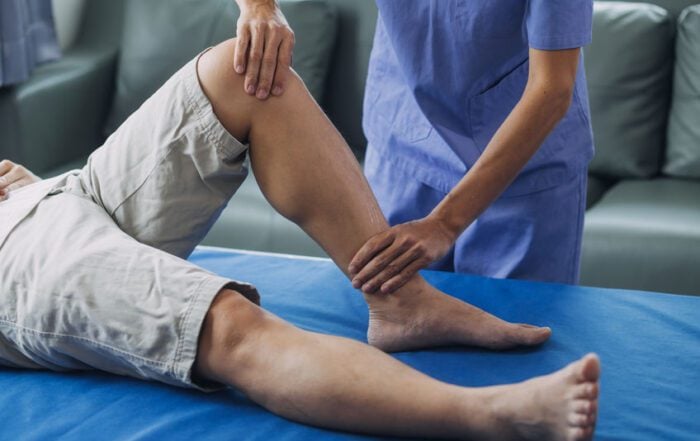Preventing Rotator Cuff Tears In Sports
Participating in sports is a popular way to stay active and maintain a healthy lifestyle. However, many sports involve repetitive motions that can put stress on the shoulders and increase the risk of injuries, such as rotator cuff tears. A rotator cuff tear can be painful and debilitating, making sports and other physical activities difficult. Knowing the risks of certain high-impact sports and proper prevention methods can help reduce the risk of rotator cuff injuries.

What is a rotator cuff tear?
The shoulder joint is a ball and socket joint that allows for a wide range of motion (ROM) to occur. A rotator cuff is a bundle of tendons and muscles that attach to the shoulder blade and wrap around the top of the arm bone, forming a cuff that helps to keep the shoulder joint ball in place. The rotator cuff also helps to lift and rotate the arm. Rotator cuff tears can occur due to overuse or trauma and can range from partial to full-thickness tears. Symptoms of a rotator cuff tear may include pain, limited ROM, and weakness.
Baseball and softball
Pitching, in sports like baseball and softball, requires repetitive overhead motion that puts a lot of stress on the rotator cuff muscles and tendons. Over time, the repetitive stress can cause small tears in the rotator cuff, which can worsen with continued pitching. Catchers in baseball and softball are also at risk of rotator cuff tears due to the frequent throwing motions involved in the game.
Tennis
Serving and hitting overhead shots in tennis can also put a lot of stress on the rotator cuff muscles and tendons. Tennis players are particularly at risk of developing rotator cuff tears due to the repetitive nature of the sport and the high speed and force of the ball. Additionally, playing tennis on hard courts can exacerbate the risk of injuries by increasing the impact of each stroke.
Swimming
The repetitive motion of swimming can place a lot of stress on the rotator cuff muscles and tendons. Swimmers are at risk of developing rotator cuff tears, particularly in the dominant arm. The breaststroke and butterfly strokes can be particularly problematic, as the stroke involves large, sweeping arm movements that can put even more stress on the rotator cuff.
Prevention methods
A great way to prevent a rotator cuff injury from occurring is to warm up and stretch before playing sports. Warming up can help to prepare muscles and tendons for the activity ahead. Build up shoulder strength through targeted exercises, such as rotator cuff exercises and shoulder presses. Use proper form when playing sports to minimize stress on the rotator cuff muscles and tendons. Rest and recover when needed. If experiencing shoulder pain or discomfort, take a break from the activity and seek medical attention if necessary.
Take action to protect the shoulder
Rotator cuff tears can be painful and limit the ability to perform daily activities and participate in sports. For athletes who participate in baseball, softball, tennis, or swimming, taking measures to safeguard the rotator cuff is crucial. By following proper prevention techniques, athletes can minimize the risk of rotator cuff tears and continue engaging in sports. If shoulder pain or discomfort occurs, seek medical attention to prevent further damage to the rotator cuff.
Recent Posts
What To Do About Hip Pain: Is It Time To See An Orthopedic Surgeon About Labral Repair?
Hip pain should not be overlooked, as the issue could be a labral tear. Symptoms like pain and instability require an orthopedic surgeon’s assessment.
ACL Repair: Will You Have Range Of Motion With Your Knee After Recovery & Physical Therapy?
After an ACL injury, ROM can be negatively affected. ACL repair surgery helps restore function, but physical therapy is essential to ROM.
Arthroscopy: What Are The Benefits Of This Minimally Invasive Outpatient Orthopedic Procedure?
Arthroscopy can help diagnose or treat joint conditions. Benefits of the MIS include faster recovery, less pain, and fewer scars.
Posterior Interbody Lumbar Fusion: What Are The Benefits Of PLIF For People With Back Pain?
People with chronic back pain may benefit from posterior interbody lumbar fusion surgery. PLIF can reduce pain and improve stability.








